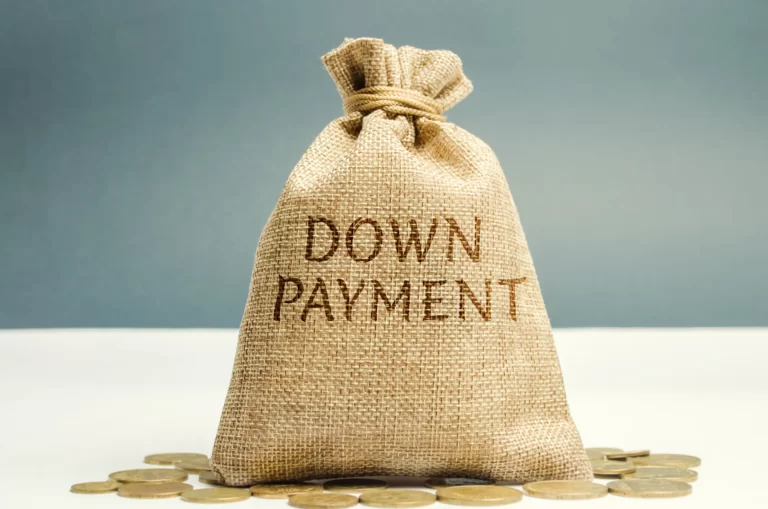A housing bubble is a phenomenon that occurs in real estate markets when property prices soar to unsustainable levels, far beyond their intrinsic value. Essentially, it's when the cost of buying a home becomes disconnected from its true worth. This can lead to a volatile situation where people are paying exorbitant prices for properties that may not hold their value in the long term.
A housing bubble is a complex market situation where property prices soar to unsustainable levels, often detached from their intrinsic value. It's like a financial rollercoaster with significant consequences. Here's a breakdown:
Key Characteristics of a Housing Bubble:
| Characteristics | Description |
|---|---|
| Rapid Price Escalation | Property prices skyrocket over a relatively short period. |
| Speculative Frenzy | Investors buy homes purely to profit from price gains. |
| Lax Lending Standards | Easy access to credit fuels demand. |
| Unrealistic Price Expectations | Belief that prices will keep rising indefinitely. |
The Aftermath of a Burst Bubble
When a housing bubble bursts, it's not a gentle deflation but rather a dramatic implosion. Consider these consequences:
Consequences of a Burst Housing Bubble:
- Foreclosures Surge: Homeowners who overextended themselves now face foreclosure as property values plummet below their mortgage debt.
- Economic Turmoil: A housing market crash can trigger a domino effect, leading to economic downturns, job losses, and reduced consumer spending.
- Banking Crisis: Banks holding large quantities of mortgages face financial strain, potentially requiring government bailouts.
- Wealth Erosion: Many individuals see their wealth and investments evaporate as home values crumble.
Contents
I. The Anatomy of a Housing Bubble
Unraveling the Formation
Understanding how housing bubbles form is like deciphering a puzzle. Here are the pieces that fit together:
Factors Contributing to Housing Bubble Formation:
- Low-Interest Rates: Central banks may reduce interest rates to stimulate economic growth. Low rates make borrowing affordable, leading to increased demand for housing.
- Speculative Behavior: Investors, expecting prices to rise indefinitely, engage in speculative buying, driving up demand and prices further.
- Lax Lending Standards: Easy access to credit, including subprime lending, allows more people to enter the market, increasing demand.
Lessons from History
Learning from history is invaluable when it comes to housing bubbles. Let's explore some infamous examples:
Historical Housing Bubbles:
- United States (Mid-2000s): The U.S. housing bubble of the mid-2000s was characterized by subprime lending, excessive speculation, and a subsequent market crash that triggered the global financial crisis.
- Japan (Late 1980s): Japan experienced a housing bubble in the late 1980s, marked by soaring property prices. When the bubble burst, it led to a prolonged period of economic stagnation.
- Ireland (Mid-2000s): Ireland faced a housing bubble in the mid-2000s, driven by a construction boom and speculative investments. The bubble's collapse had severe economic repercussions.
II. Signs of a Housing Bubble
Identifying Early Warning Signs
To effectively prevent a housing bubble, it's crucial to recognize the warning signs. These indicators often surface as the bubble inflates:
Early Warning Signs of a Housing Bubble:
| Signs | What to Watch For? |
|---|---|
| Rapid Price Increases | Watch for consistent, substantial property price jumps. |
| Speculative Buying Spree | Be cautious if many buyers are investing for quick gains. |
| High Levels of Debt | Excessive borrowing can indicate an unsustainable market. |
| Tight Housing Inventory | Limited housing supply can drive up prices unexpectedly. |
Discussing Rapid Price Increases
Understanding the Meteoric Rise:
- Rapid price increases are a hallmark of a housing bubble.
- Prices often outpace wage growth and inflation, making homes less affordable.
- Buyers may feel a sense of urgency to purchase, fearing they'll be priced out of the market.
Speculative Buying: A Risky Game
Speculative Behavior's Role:
- Speculative buying involves acquiring property solely for profit.
- Investors believe prices will keep climbing, so they buy to sell later at a higher price.
- This behavior can artificially inflate demand and property values.
High Levels of Debt: A Ticking Time Bomb
The Debt Dilemma:
- When buyers take on substantial debt to purchase homes, it raises concerns.
- High debt levels may lead to financial instability if housing prices drop.
- Default rates on mortgages can increase during a housing bubble burst.
III. Consequences of a Housing Bubble
Exploring Economic and Social Impacts
A housing bubble's burst ripples through society, affecting various aspects of life. Let's explore these consequences:
Economic Impacts:
- Economic Slowdown: As the housing market crashes, it often triggers a broader economic slowdown, including job losses and reduced consumer spending.
- Banking Sector Stress: Banks may face financial stress due to a high number of mortgages at risk of default. This can lead to a credit crunch.
- Investment Erosion: Many individuals see their investments in real estate diminish as property values plummet.
Social Impacts:
- Homeownership Stress: Homeowners may find themselves underwater on their mortgages, causing financial stress and potential foreclosures.
- Rising Rent Costs: Rental markets may see an uptick in demand, causing rents to rise, which can affect renters' financial stability.
- General Economic Uncertainty: A housing bubble burst can create a sense of economic uncertainty and anxiety among the public.
Impact on Homeowners, Investors, and the Broader Economy
Diverse Impacts:
- Homeowners may face foreclosure, particularly if they purchased at the peak of the bubble.
- Investors who speculated on rising prices may suffer losses.
- The broader economy may experience recessionary pressures, affecting industries tied to real estate and construction.
IV. Strategies to Avoid a Housing Bubble
Proactive Measures for Prevention
Preventing a housing bubble requires vigilance and strategic intervention. Here are effective strategies to safeguard your housing market:
Strategies for Avoiding Housing Bubbles:
- Central Bank Policies: Central banks can influence the housing market by adjusting interest rates. Raising rates when the market is overheating can cool demand and prevent bubbles.
- Prudent Lending Standards: Implement stringent lending standards to ensure borrowers can manage their mortgage payments responsibly.
- Monitoring Speculative Activity: Keep a close watch on speculative buying and consider implementing measures to discourage it.
- Data-Driven Decision-Making: Use data analytics to identify trends and anomalies in the housing market, allowing for timely intervention.
- Public Education: Educate potential buyers about responsible homebuying and the risks of speculative behavior.
V. Lessons from Past Bubbles
Applying Knowledge from History
History provides valuable lessons on how to navigate housing bubbles. Here's what we've learned:
Key Takeaways from Past Housing Bubbles:
- Regulation Matters: Effective regulations can help curb risky lending practices and speculative behavior.
- Early Intervention: Identifying warning signs and taking corrective measures early can prevent bubble formation.
- Balanced Growth: Sustainable growth in the housing market should align with economic fundamentals.
- Consumer Education: Educating the public about the risks of excessive borrowing and speculative buying is essential.
- Global Perspective: Analyzing housing markets worldwide offers insights into effective policies and prevention strategies.
VII. Promoting Affordable Housing
Balancing Affordability and Prevention
Balancing the prevention of housing bubbles with ensuring affordable housing options is a complex endeavor. Here's a closer look at the strategies and policies involved:
1. Affordable Housing Initiatives:
Affordable housing initiatives aim to make homeownership accessible to a broader segment of the population. Key initiatives include:
- Subsidized Housing: Government programs that offer financial assistance to low-income individuals and families to secure housing.
- Affordable Housing Tax Credits: Tax incentives for developers to build or rehabilitate affordable housing units.
2. Rent Control Measures:
Rent control policies are designed to protect renters from exorbitant rent increases. Some approaches include:
- Rent Caps: Setting limits on how much landlords can increase rent annually.
- Just-Cause Evictions: Implementing restrictions on evicting tenants without specific reasons.
3. Community Development:
Investing in community development can revitalize neighborhoods and create sustainable housing options:
- Mixed-Income Housing: Building communities with a mix of income levels to promote economic diversity.
- Urban Renewal: Renovating older neighborhoods to provide quality housing and amenities.
4. Progressive Taxation:
Progressive property taxes can discourage speculative investment by imposing higher taxes on properties owned for speculative purposes.
5. Zoning Reform:
Reforming zoning regulations can remove barriers to housing construction in high-demand areas, facilitating increased supply.
VIII. The Role of Data and Analysis
Harnessing Data for Prevention
Data analytics and real-time monitoring play a vital role in preventing housing bubbles. Here's how data-driven approaches can make a difference:
1. Early Warning Systems:
Utilizing data, early warning systems can be established to detect signs of a potential housing bubble. These systems may include:
- Price-to-Income Ratios: Monitoring the ratio of home prices to household incomes.
- Market Supply and Demand: Tracking housing inventory levels and demand patterns.
2. Predictive Analytics:
Predictive analytics models can forecast market trends and identify anomalies that could lead to a bubble.
3. Transparency and Disclosure:
Transparency is crucial for an efficient housing market. This includes:
- Accurate Reporting: Ensuring accurate and timely reporting of housing market data.
- Access to Information: Making market data accessible to the public and stakeholders.
IX. International Perspectives
Learning from Global Experiences
Examining international housing markets and policies provides valuable insights into effective strategies for managing housing markets and preventing bubbles:
1. Comparative Analysis:
Comparing housing markets and policies in different countries allows for a deeper understanding of their strengths and weaknesses.
2. Policy Transfer:
Adopting successful policies from other countries can be a proactive approach to preventing housing bubbles.
3. Case Studies:
Analyzing case studies of countries that effectively managed housing bubbles provides practical lessons for policymakers.
X. Final Thoughts
Safeguarding Housing Markets
In conclusion, the prevention of housing bubbles is a multifaceted endeavor that requires a delicate balance between promoting affordability and economic stability. Key takeaways include:
- Affordable Housing Initiatives: Policies aimed at increasing accessibility to homeownership.
- Data and Analysis: Leveraging data-driven insights for early detection and prevention.
- International Perspectives: Learning from the experiences of other countries in managing housing markets.
Emphasizing responsible housing policies, transparent market practices, and informed decision-making is paramount. By applying these principles, policymakers, stakeholders, and communities can work together to safeguard housing markets from the perils of bubbles, ensuring long-term stability and prosperity.






